Fiddle, Forests and Fowl Fables – The Motion Picture
Music from Wyastone – Studio Concert Series
Want to view the full video?
You need to be an ESO Digital Supporter to view the full content. Please click here for more information, or sign in to your account below if you’re already registered.
Already a supporter? Click here to log in.
Programme
Kile Smith The Bremen Town Musicians
Kenneth Woods The Ugly Duckling
David Yang Lubin, from Chelm
Jay Reise The Warrior Violinist
Thomas Kraines The Tale of Hansel and Gretel
Artists
English Symphony Orchestra
Conductor: Kenneth Woods
Narrators: Gemma Whelan, Hugh Bonneville, Henry Goodman, Davood Ghadami
Illustrators: Wanda Sobieska, Alisa Snyder, ESO Youth
About this Concert
Have you ever been on a long journey with your family and, after hours in the car or on the plane, you were so bored you thought you just might go mad? Well, that’s what this video is for. Just when you’re about to say “are we there yet” for the 400th time, instead try saying “Mum, can we listen to Lubin again?” I promise, the car will feel like it’s going twice as fast once the music starts.
And have you ever been stuck at home with nothing to do? I mean NOTHING TO DO. For ages. Wishing you could go on an adventure or experience something different from the same old dulllllllll scene? Well, that’s also what this record is for. Just when you think you’re so stir crazy you’ll have to start teasing the cat, try saying “Dad, canI listen to The Warrior Violinist, please?” I can assure you, as soon as Davood starts talking, the walls of the living room will melt away, and you’ll be in ancient Egypt, in a story full of adventure and love, talking to the Sphinx, winning a war and playing the violin.
Now, it may come as a surprise to you, but your parents get just as bored and fed up as you do, so we’ve made sure they’ll enjoy these stories just as much as their kids. Just in a different way – there are aspects to all five stories that we are pretty sure older listeners will connect with. But there’s also lots of stuff here… just for you! So, if you find yourself giggling like crazy in the back seat at something Gemma or Henry have said, and your parents ask “what’s so funny?”, you can explain to them that you will be happy to translate the joke into ‘boring old person language’ for a small fee.
You might earn enough for some sweets or an ice cream the next time the car stops. Top tip – the more you laugh, the more you earn. If you’ve got a sibling travelling with you, get them giggling too and you’ll double your revenue.
My friend David, who wrote Lubin, from Chelm, got interested in creating new musical storytelling works because he was reading bedtime stories to his two little girls. Several years later, I started writing The Ugly Duckling for my kids when they were little for the same reason. It’s been great over the years to see thousands of young people at our concerts laugh at the exploits of Lubin, the hapless robbers in the Bremen Town Musicians or the grandiose Condessa Duck. But, if we’re able to put a smile on your face on a rainy afternoon at home, or help the trip to your summer holidays go a bit quicker, then we’ll all be very happy.
Enjoy!
Ken
Discover More
Kile Smith - The Bremen Town Musicians
Kile Smith – The Bremen Town Musicians
About the Piece - The Bremen Town Musicians
David Yang commissioned The Bremen Town Musicians for Auricolae in 2008. It has since been taken up by other ensembles across the country, as far away as Australia and Qatar, and in the Philadelphia Orchestra “Our City, Your Orchestra” 2021 chamber music series. In 2016 the conductor Kenneth Woods, who as cellist performed and recorded Bremen with Auricolae, asked me to orchestrate it for his English Symphony Orchestra. I’ve adapted the Brothers Grimm story for my libretto, changing none of the salient features of this tale of four animals who, seeking fortune in the far city of Bremen, fall among thieves, outwit them, and find their good fortune as friends together, never arriving in Bremen.
– Kile Smith
About the Narrator - Gemma Whelan

Gemma Whelan
A favourite of young viewers everywhere for her many memorable performances in Horrible Histories, British actress and comedian Gemma Whelan is known for her varied body of work. Theatre includes: Upstart Crow (Gielgud, writ. Ben Elton); A Slight Ache (The Harold Pinter); One Man Two Guv’nors (Theatre Royal Haymarket/National Theatre). Television includes: Killing Eve (AMC/BBC); Gentleman Jack (BBC/HBO); Game of Thrones (HBO); White House Farm, The Moorside, Decline and Fall, Upstart Crow, Queers, Uncle, Morgana Robinson’s The Agency, Asylum, Mapp and Lucia, Hetty Feather, The Persuasionists, Murder in Successville (BBC); The End of the F***ing World (Channel 4/Netflix). Film includes: Emma (Working Title).
About the Composer - Kile Smith
Grammy-nominated composer Kile Smith has gained international acclaim through a distinguished string of commissions. Gramophone called his Vespers “spectacular” and Audiophile Audition, “easily one of the best releases of the year of any type… a crime to pass up.” Ten CDs with his music have been released since 2018. The Arc in the Sky with The Crossing received a 2020 Grammy nomination for Best Choral Performance, and his Canticle with Cincinnati’s Vocal Arts Ensemble helped win the 2020 Best Classical Producer Grammy. The Philadelphia Orchestra featured The Bremen Town Musicians in their 2021 “Our City, Your Orchestra” chamber music series. His first opera, The Book of Job, will premiere in multiple cities in the 2022/23 season.
Kenneth Woods - The Ugly Duckling
The Ugly Duckling
When an ageing Hans Christian Andersen was asked “why have you not written an autobiography?” he answered simply, “I have. It is called The Ugly Duckling.” Andersen’s children’s novella is one of the great literary works of the 19th Century, a masterpiece which embraces the whole of the human journey through life, from the most agonising moments of rejection and self-loathing, to the euphoria of true self acceptance.
Listeners who have grown up with the charming song sung by Danny Kaye in the 1950’s Andersen biopic may be surprised to learn that Andersen’s story is different in dozens of ways, right down to the colour of the Duckling’s feathers, which are, in fact, grey rather than “stubby and brown.” – Kenneth Woods
About the Narrator - Hugh Bonneville
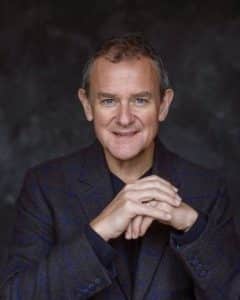
Hugh Bonneville
About the Composer - Kenneth Woods

Kenneth Woods
About the Illustrator - Wanda Sobieska
Wanda Sobieska is a violinist based in northeast Ohio, active as a solo, chamber, and orchestral musician. Her engagements include work for traditional concert settings, opera and musical theater pits, film scoring stages, church services, private events, and new music concert series, among others.
She is also a prolific arranger: her website, freegigmusic.com, has served musicians since 2009 and receives 1000 visitors a day from all over the world. Additionally, she is proficient as a composer and violist, and dedicated nearly a decade to directing a handbell choir.
Born in Warsaw, Poland, she is the fifth generation in a family of musicians and musicologists. She holds a B.M. in violin performance from the University of Cincinnati College-Conservatory of Music.
THE UGLY DUCKLING – A LETTER FROM WANDA SOBIESKA
Dear ESO friends and listeners-
I had asked Wanda to write a blog post about her wonderful illustrations for The Ugly Duckling in advance of this week’s premiere. She chose to do so in the form of this beautiful letter, which I am very happy to be able to share with you all.
— Ken
Kenneth Woods – Artistic Director
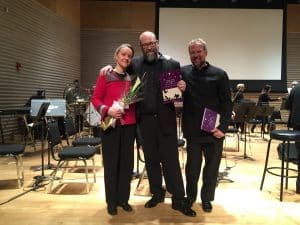
Wanda and Ken with conductor Bradley Thachuk at the Canadian premiere of The Ugly Duckling with the Niagara Symphony Orchestra in 2018
Hello Ken,
For some reason, I found it easier to present my thoughts in the form of a letter. I hope you find some meaning in there.
I am copying and pasting below.
===============
November 23, 2020
Kent, Ohio
Dear Ken,
I can hardly believe that it has been five years already since the initial premiere of our “Ugly Duckling”. How time flies!
I write this letter at a curious moment in time: both looking forward to the upcoming performance with Hugh Bonneville and looking back over the initial process and the duckling’s many simple and sincere steps over the years. It feels like a moment that is a mirror, both looking into the future and reflecting the past.
I remember the very first illustration that I conceived for “The Ugly Duckling”. It was a picture of nothing at all. Literally, it was the blank white slide that is presented as the narrator relates the details of the duckling’s harrowing struggle to survive the winter.
The reason it is blank is because there is no music at that moment. When I first started to work on the project, I decided that what lay at the heart of it for me was not what I could create but how well I could listen. So I burned a CD with the audio track that you had sent, plopped it into the appropriate drive in my trusty 2003 Dodge Intrepid, and burned the tires off driving all over northeast Ohio while immersing myself in the text, the plot, and most of all the music of that recording.
My younger brother and sister used to joke that my beloved car of that era was like the Tardis: dark blue, capable of traveling at warp speeds through the space-time continuum, and bigger on the inside than on the outside. I found the Duckling to be equally magical.
And so I listened: sixty, eighty, one hundred times? I couldn’t really tell you how many. But I can tell you that I listened as many times as was necessary for the work to reach a sort of saturation point in my soul: a point where I had not only memorized it, but at which it had become internalized into the very reflexes of my being. And at that point, out of the haziness of some general outline appeared the blank white slide paired off with the struggles of winter.

The Duckling in the depths of winter
It falls at the lowest point of the story: the moment of complete hopelessness, greatest tragedy, and utter despair. When I listened, I heard a moment of such heart-wrenching grief that the music could not bear the task of accompanying it. And if the music could not support it, neither could my illustrations: they were so tied to your score. So I left that spot to speak for itself.
In a curious sort of inversion, the same effect is in use at the very beginning: the narrator speaks the opening line on a blank black slide. Then the first image fades in together with the music. As at the moment of greatest tragedy, the absence of music spells a dramatic death, so at the opening of the story, the music conjures in the illustrations because it is the source of life.

Before the music conjures life, there is nothing.
That blank black slide is in a sense echoed throughout the story in the occasional illustrations that rely on silhouetted characters against a colored background. And their polar opposites appear at the very end in the white shapes of the swans. After all, the most magnificent transfiguration can only be possible if sourced from the depths of despair.
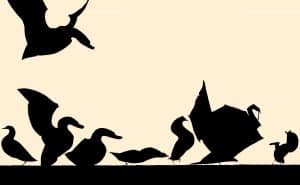
Silhouettes
ON THE FOUR SEASONS
The blank white slide is significant for another reason. Symbolically, it represents the absence of music, life, and hope. But on a physical level, it depicts snow, and that physical level is very real. It is perhaps the most distilled portrayal of a progression that seemed to accompany and complement the storyline proper as I listened: that of the four seasons.
Translated into more metaphysical terms, this is the progression of life, decay, death, and rebirth.
I found that with the coming of springtime and rebirth, the illustrations took on a more symbolic form. There was a very practical reason for this: at that point in the story, the duckling is already a swan, but I could not show him as such because it would spoil the dramatic effect.
But perhaps more importantly, I feel that this decision is justified in an aesthetic sense. Over the course of summer, autumn, and winter, all the basic building blocks of the story are put into place. With the arrival of springtime, that initial state is essentially reborn, but at a higher vibration. Since the audience at this point would be well-versed in the setting of the story and its key players, I felt compelled to augment this reality at a sort of higher frequency of existence through the use of the symbolic imagination. It is a mode of not only delivering to the audience what is expected but inviting them to openly participate in the process of creation.
That mode, of course, is likewise employed at the aforementioned moments with blank slides and silhouettes, be they black or white. I also occasionally found myself inserting it into other illustrations by way of color, or rather an indeterminate form thereof. The illustrations were all drawn by hand, with graphic software used only for the simplest of purposes: the superimposition of character drawings over backgrounds and the incidental solid fill. As I worked my way through the pictures, I would by and by stop and reach for two very specific art markers. One was labeled “slate” and the other “shale”. The color of those nibs is truly not something that can be described: they are both a curious admixture with varying degrees of gray, brown, purple, and “je ne sais quoi”.
In the illustrations, they appear — one or both — in sporadic spots: tree bark, mountain slopes, shrubbery, fence posts, dirt. My goal, in those places, was not to devalue the importance of that subject matter but, rather than spelling out every detail, to leave certain bits of terrain somewhat “open” and to trust in the intelligence of the audience to imagine and to complete.
ON BOUNDARIES
This approach questions the boundary between the artist and the audience and who it is that actually creates the work of art.
It is but one of the boundaries that I found myself questioning while working on “The Ugly Duckling”.
I wrote earlier that to me the storyline follows the sequence of the four seasons. In terms of this connected flow and the nature of your musical score, the whole forms one coherent unit. However, for me to wrap my mind around the project while at work, I found it necessary to subdivide it into scenes that could then fit back into that overarching unity. I suppose this ventures into the territory of what Samuel Taylor Coleridge termed as “distinguish but not divide”.
At any rate, while this involved a number of components and subcomponents, the biggest distinction for me exists between what I think of as the two “Acts” of the drama, the first consisting of summer; with autumn, winter, and spring comprising the second. The first act deals with the external world: the circumstances into which the duckling is brought. This is reflected by the general “business” of the pictures: the number of characters, the variety of backgrounds, and so forth.
In the second act, the focus shifts to the internal, immaterial realm. In a practical sense, there are far fewer “ingredients” in the pictures and a progression, as I wrote before, toward symbolism. The color purple, which has a somewhat mystical quality, predominates in many shades. And in the final autumnal slide, we see the night sky studded with stars. Among them is planted the constellation of the swan: headed downwards, it is setting at that time of year.

Cygnus the swan in the night sky
The celestial spheres serve as the abode of the spirits; and this internal world is the place of ultimate transformation.
Where does this story truly take place?
Another distinction that I found myself reconsidering was that of foreground and background. While in the beginning, the two are very clearly delineated, this state grew more hazy for me as the entire world of the duckling grew more magical. The whole affair comes to a head at the close of the first act with the illustration of the scarecrow, which (who?) at first appears to be a simple background picture but upon closer inspection proves to be the embodiment of the surroundings on the whole, saturated with a highly sceptical attitude toward our protagonist.
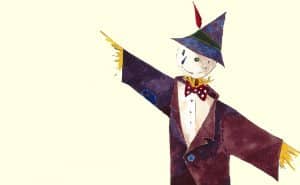
The inanimate becomes animate, and in a not very nice way. The setting can speak for the story just as much as the characters can.
ON A PERSONAL NOTE
On a personal note, not of my own, but of Hans Christian Andersen, a critic apparently once asked him, “Will you write an autobiography?” to which Andersen replied, “I already have: it is ‘The Ugly Duckling’.”
The seeds of the duckling’s magical transformation are present throughout the story. In terms of his appearance, what seems to be an ungraceful hump on his back unfurls into a long, noble neck; and the two black warts on his face turn out to be the handsome black knob above the beak that mute swans so proudly wear. And in terms of the setting, the purple hues of the first two illustrations foreshadow the mystical nature of the second act.
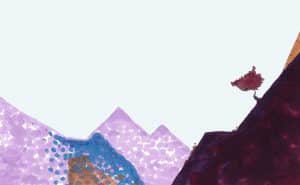
Purple foreshadowings
We know how the story of “The Ugly Duckling” concludes, but this makes me wonder: how many duckling tales are happening in the world as we speak? When one knows the ending of a story, it is easy to look back on it; but when embroiled in the midst of the action, that perspective may be beyond our grasp. I suppose this ties back to my thoughts that opened this letter, and how, in the present moment, I very distinctly sense both the future and the past.
The story of “The Ugly Duckling” is one of those rare masterpieces that speaks to humanity on a universal level. That potential for transformation exists in each and every one of us, and can — and will — transfigure the world into a better place.
With best wishes as always,
Wanda
David Yang - Lubin, From Chelm
About the Narrator - Henry Goodman
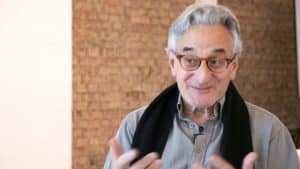
Henry Goodman
ABOUT THE COMPOSER – DAVID YANG

David Yang
He was the Director of Auricolae Music and Storytelling Troupe,which he founded having reconnected with his love of storytelling while reading to his young daughters – www.auricolae.com
About the Illustrator - Alisa Snyder
Alisa Snyder was born in Providence, Rhode Island but she has lived most of her life in Halifax, Nova Scotia. She holds a BFA from the Nova Scotia College of Art and Design and an MFA from Southern Illinois University at Carbondale. Landscape and still life are the primary subjects of her painting, and central to her work is an emotional response to nature. Her love of music has always been a part of her life and practice as a visual artist, and illustrating David Yang’s score and story was a special pleasure.
About the Arranger - Kenneth Woods

Kenneth Woods
About the Piece - The Warrior Violinist
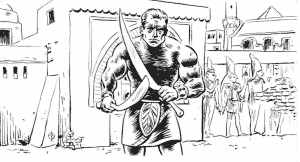
The Warrior Violinist
Jay Reise
About the Narrator - Davood Ghadami
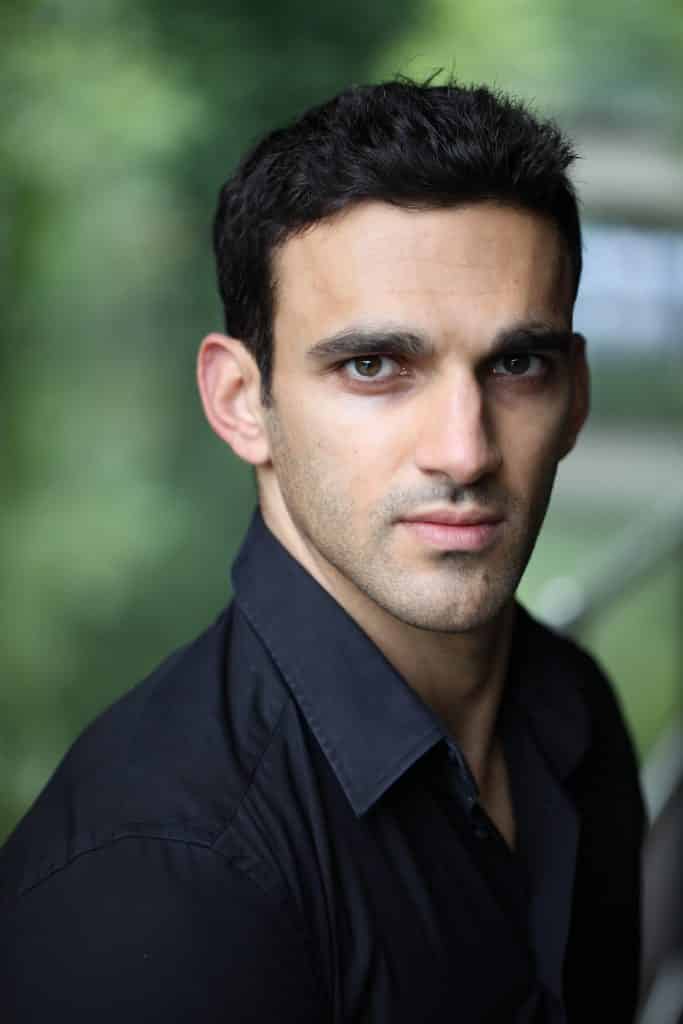
Davood Ghadami
About the Composer - Jay Reise

Jay Reise
About the Soloist - Zoë Beyers
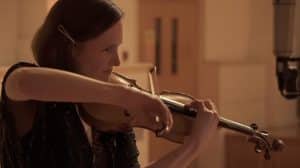
Zoë Beyers
Creating 'The Warrior Violinist' with Davood Ghadami
In conversation with composer Jay Reise
ABOUT MUSICAL STORYTELLING: ZOË BEYERS IN CONVERSATION WITH DAVID YANG AND KENNETH WOODS
ESO Leader Zoë Beyers talks to Kenneth Woods and David Yang about the evolution of the Auricolae Music and Storytelling project which gave birth to many of the the storytelling works featured in our series.
The Music Room series is produced by Shropshire Music Trust and supported by Arts Council England.
About the Piece - Hansel and Gretel
I wrote Hansel and Gretel to perform with the children’s musical troupe Auricolae in 2008, and orchestrated it a few years later, at the behest of Maestro Kenneth Woods. Perhaps in response to the gothic nature of the story, the piece is very self-consciously Germanic; the leitmotifs for Hansel and Gretel are both Wagnerian in character (although Hansel’s theme originated as an alteration of Schubert’s “Das Wandern”), and the witch/stepmother’s theme is a Schoenbergian tone row. The woodcutter’s theme, the first music one hears in the piece, is a thinly disguised motive from Strauss’ “Metamorphosen,” which Strauss himself had lifted from the funeral march in Beethoven’s “Eroica” symphony. In a particularly grandiose touch, all the tempo and character markings are in German as well (I don’t speak German); of course, this doesn’t need to concern the listener at all, but I thought of it as an in-joke between myself and the performers. My gratitude and awe also go to Henry Goodman, whose nuanced and thrilling interpretation of the story elevates the piece immeasurably.
– Thomas Kraines
About the Narrator - Henry Goodman

Henry Goodman
About the Composer - Thomas Kraines
Thomas Kraines has forged a multifaceted career as a cellist and composer, equally comfortable with avant-garde improvisation, new music, and traditional chamber music and solo repertoire. A member of the Daedalus Quartet, Mr. Kraines also performs frequently with the Network for New Music, the Arcana Ensemble, and as a duo with cellist Kinan Abou-afach. He is also an accomplished composer of chamber music; his works have been performed around the world by artists such as pianists Awadagin Pratt and Wayman Chin, violinists Corey Cerovsek and Jennifer Frautschi, and sopranos Maria Jette and Ilana Davidson. Kraines has given musical improvisation workshops and performances at the Longy School of Music, the University of Florida at Gainesville, and the University of Pennsylvania. He has taught at the Peabody Conservatory, the Longy School of Music, the Killington Music Festival, Yellow Barn, and Princeton University, and currently teaches at the University of Pennsylvania.
About Musical Storytelling: Zoë Beyers in conversation with David Yang and Kenneth Woods
ESO Leader Zoë Beyers talks to Kenneth Woods and David Yang about the evolution of the Auricolae Music and Storytelling project which gave birth to many of the the storytelling works featured in our series.
The Music Room series is produced by Shropshire Music Trust and supported by Arts Council England.
Production Information
Arcana.fm - 23rd December 2020
Richard Whitehouse
https://arcana.fm/2020/12/23/eso-warrior-violinist/
Following on from its uproarious version of Lubin from Chelm [*], the English Symphony Orchestra continues its series of pieces for virtual storytelling in the guise of an old Egyptian tale – here given a contemporary twist to result in the ‘morality’ fable The Warrior Violinist.
This is a parable about being careful what one wishes for. It centres on a youth who plays the violin to exclusion of all else, then finds an even greater other love – the Pharaoh’s daughter. Imagining himself inferior, he bids the Sphinx transform him into a great warrior – in which guise he vanquishes Egypt’s enemies. The princess can love only the man she heard playing the violin and when the warrior tries to reclaim his former prowess, he finds himself unable to play – the Sphinx’s warning that no-one can be changed back having proven only too true.
Davood Ghadami is a personable and thoughtful narrator; his understatement enabling one to focus on a musical score that, even more than the previous two in this series, packs a wealth of incident into a through-composed score which is effortlessly sustained over its 18 minutes. A tribute, indeed, to the initiative of Jay Reise in having elaborated a piece written almost a decade ago for this Art of Storytelling series. Not the least of its attractions is the extensive role allotted solo violin, played here by Zoë Beyers with no mean poise and resourcefulness.
The remaining ESO musicians play with skill and sensitivity, while Kenneth Woods ensures clarity of texture even in denser passages. The production should provoke children and adults alike – and, as usual with ESO, a range of sundry material enhances the overall experience.
Recorded at Wyastone Concert Hall, Monmouth, on 31st July 2020
Orchestra Sessions
Orchestra Manager: Simon Brittlebank / The Music Agency
Stage Manager: Ed Hayes / The Music Agency
Producer & Editor: Tim Burton
Engineer & Editor: Matthew Swan
Voice-over Sessions
Producer & Editor: Tim Burton
Engineer: Richard Cottle
